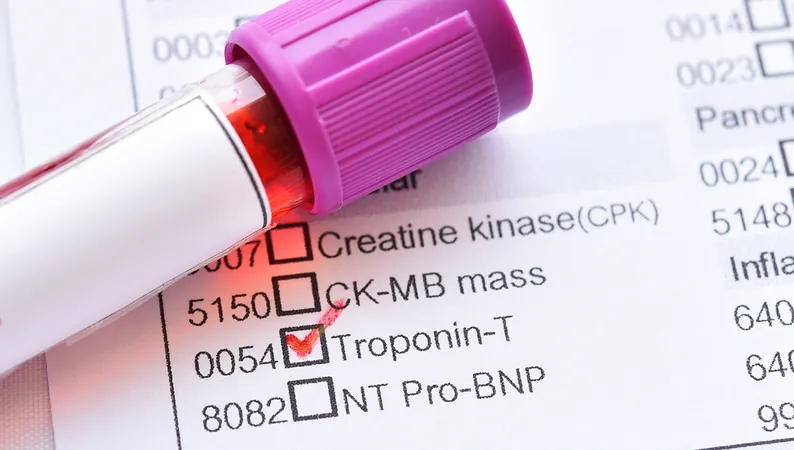
Revolutionary Uses for High-Sensitivity Troponin Tests: A Game-Changer in Heart Disease Prevention?
2025-04-16
Author: Li
In a groundbreaking new analysis, researchers suggest that adding high-sensitivity cardiac troponin assays to standard risk assessment methods may significantly transform how we prevent cardiovascular diseases (CVD). Not only are these tests renowned for diagnosing heart attacks, but they can also detect minimal levels of cardiac troponin T and I in otherwise healthy individuals.
Published in the April 15, 2025, edition of the Journal of the American College of Cardiology, the study's authors argue for the routine inclusion of these tests in daily blood draws—especially for those who may require statin therapy. Spencer J. Keene, PhD, from the University of Cambridge, emphasized that we might be "repurposing" these accessible and cost-effective troponin assays, potentially improving patient outcomes.
Keene explained that although troponin tests may not drastically alter treatment for high-risk patients identified through traditional methods, they could provide critical insights for those at lower or intermediate risk levels. He advocated for the use of risk-prediction models supplemented by these assays to guide medical decision-making.
Nicholas Marston, MD, from Brigham and Women's Hospital, echoed this sentiment, noting that while high-risk patients are likely to benefit from statins regardless, troponin testing could be a valuable consideration in discussions about treatment for those at heightened but not yet urgent risk.
Unlocking the Data: What the CAPRICE Study Revealed
The CAPRICE study analyzed data from over 62,000 adults, none of whom had previously diagnosed CVD. With a follow-up period averaging nearly 12 years, the findings were striking—16.1% of those monitored saw the emergence of serious cardiovascular events. As troponin levels increased, so did the risk of these events, with rising concentrations of hs-cTnT correlating to higher incident rates.
In fact, the combination of troponin assays with traditional risk factors showed heightened predictive accuracy. Researchers estimated that implementing hs-cTnT and hs-cTnI screenings could potentially prevent one extra cardiovascular event for every 408 and 473 patients, respectively, by reclassifying them as high-risk candidates for statin therapy.
A Call to Action: The Need for Change
Despite the promising results, Keene recognized that physician hesitation and financial constraints may limit the widespread adoption of troponin tests in routine clinical practice. He called for further studies to validate these findings and assess cost-effectiveness.
In a related editorial, Cian P. McCarthy, MBBCh, from Massachusetts General Hospital and Harvard Medical School, maintains that incorporating hs-cTn into risk-based CVD management could enhance prevention and mitigate overtreatment cases.
However, he cautioned that this approach requires a significant shift in mindset among clinicians, as troponin assays have long been viewed as emergency tools primarily used for diagnosing myocardial infarction, not as preventive measures.
As healthcare evolves, embracing high-sensitivity troponin testing could be a crucial advance in the fight against heart disease, helping to better identify who needs intervention and when. The future of heart health may depend on how quickly and effectively we integrate this innovation into everyday healthcare practices.



 Brasil (PT)
Brasil (PT)
 Canada (EN)
Canada (EN)
 Chile (ES)
Chile (ES)
 Česko (CS)
Česko (CS)
 대한민국 (KO)
대한민국 (KO)
 España (ES)
España (ES)
 France (FR)
France (FR)
 Hong Kong (EN)
Hong Kong (EN)
 Italia (IT)
Italia (IT)
 日本 (JA)
日本 (JA)
 Magyarország (HU)
Magyarország (HU)
 Norge (NO)
Norge (NO)
 Polska (PL)
Polska (PL)
 Schweiz (DE)
Schweiz (DE)
 Singapore (EN)
Singapore (EN)
 Sverige (SV)
Sverige (SV)
 Suomi (FI)
Suomi (FI)
 Türkiye (TR)
Türkiye (TR)
 الإمارات العربية المتحدة (AR)
الإمارات العربية المتحدة (AR)